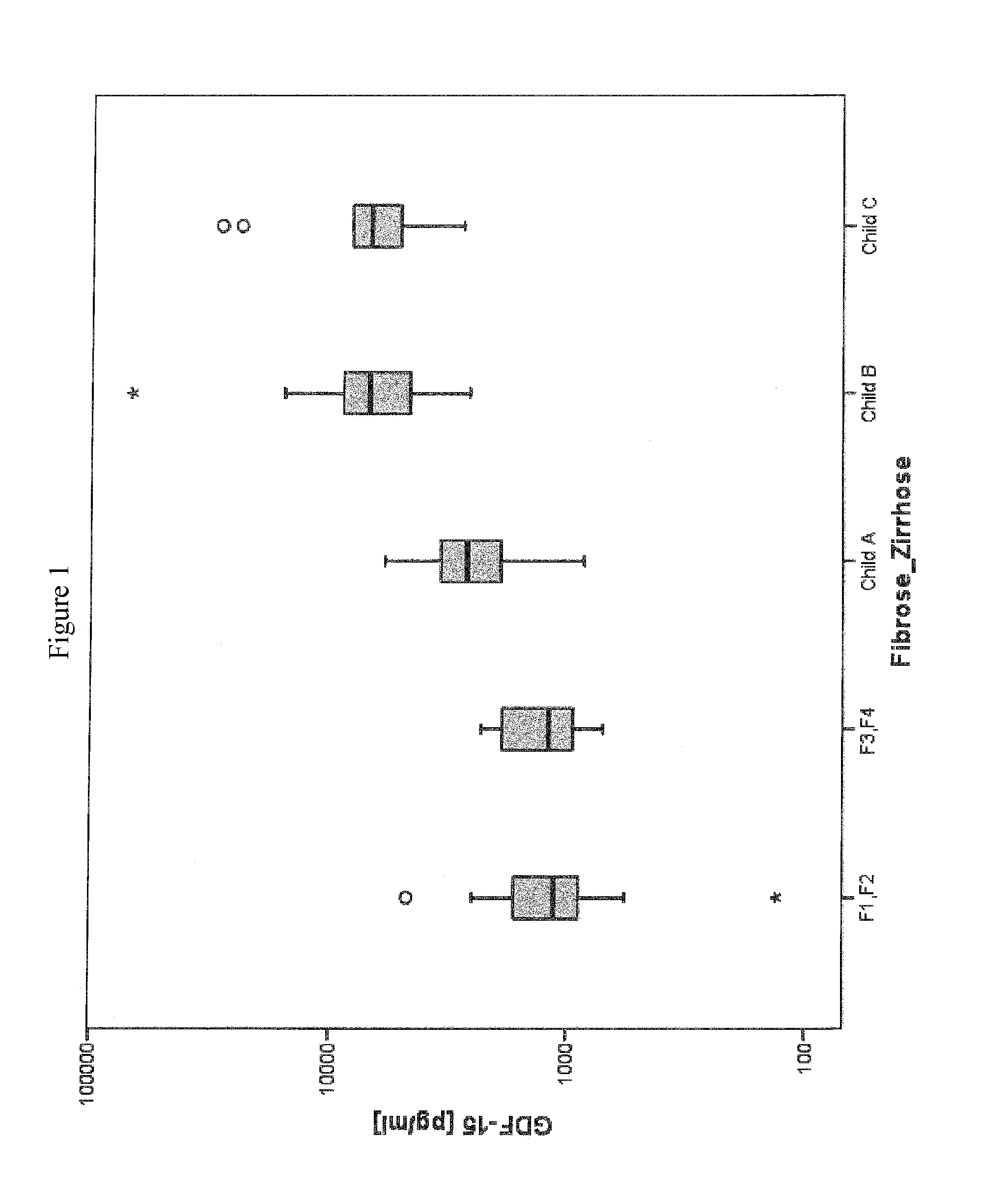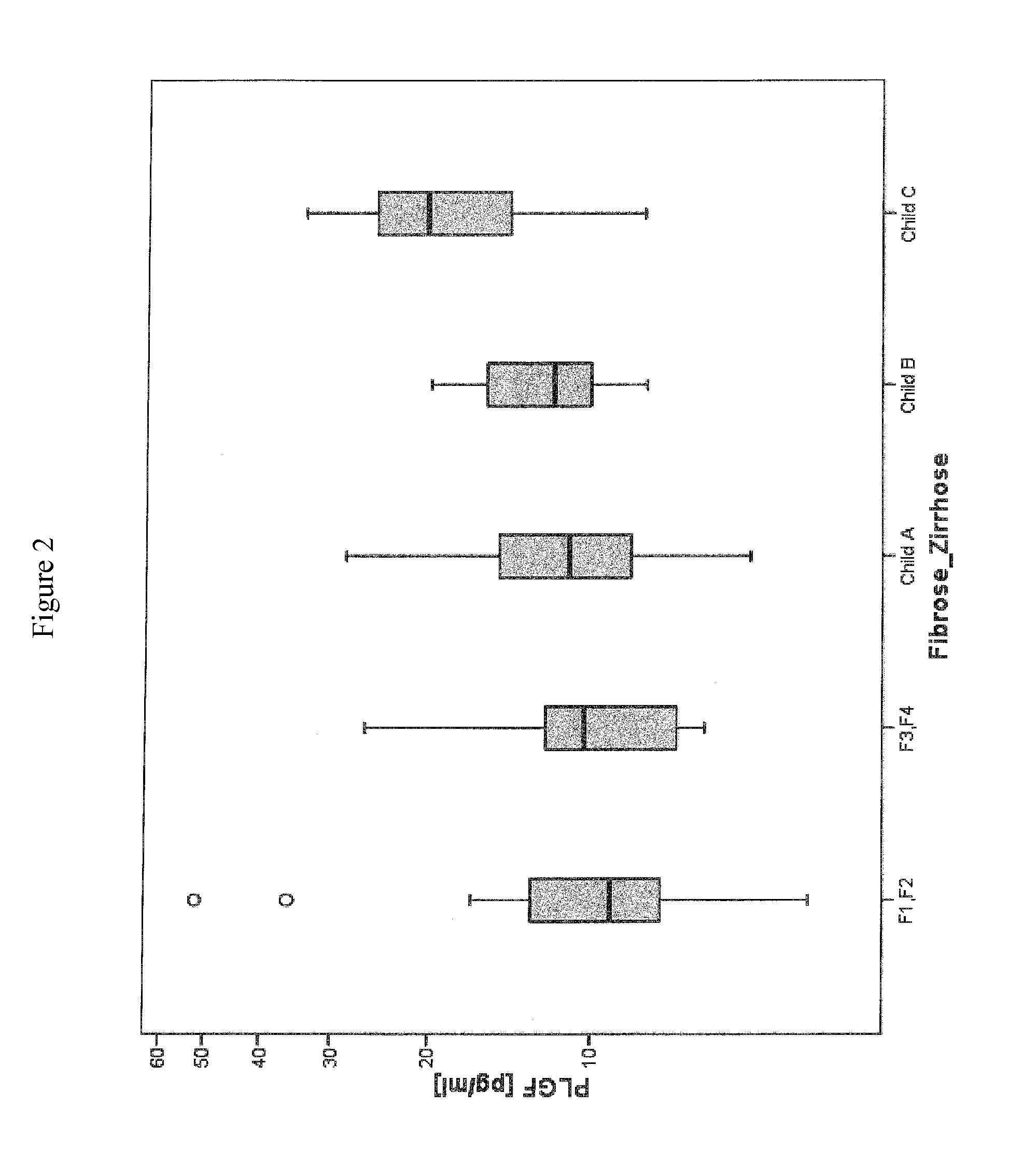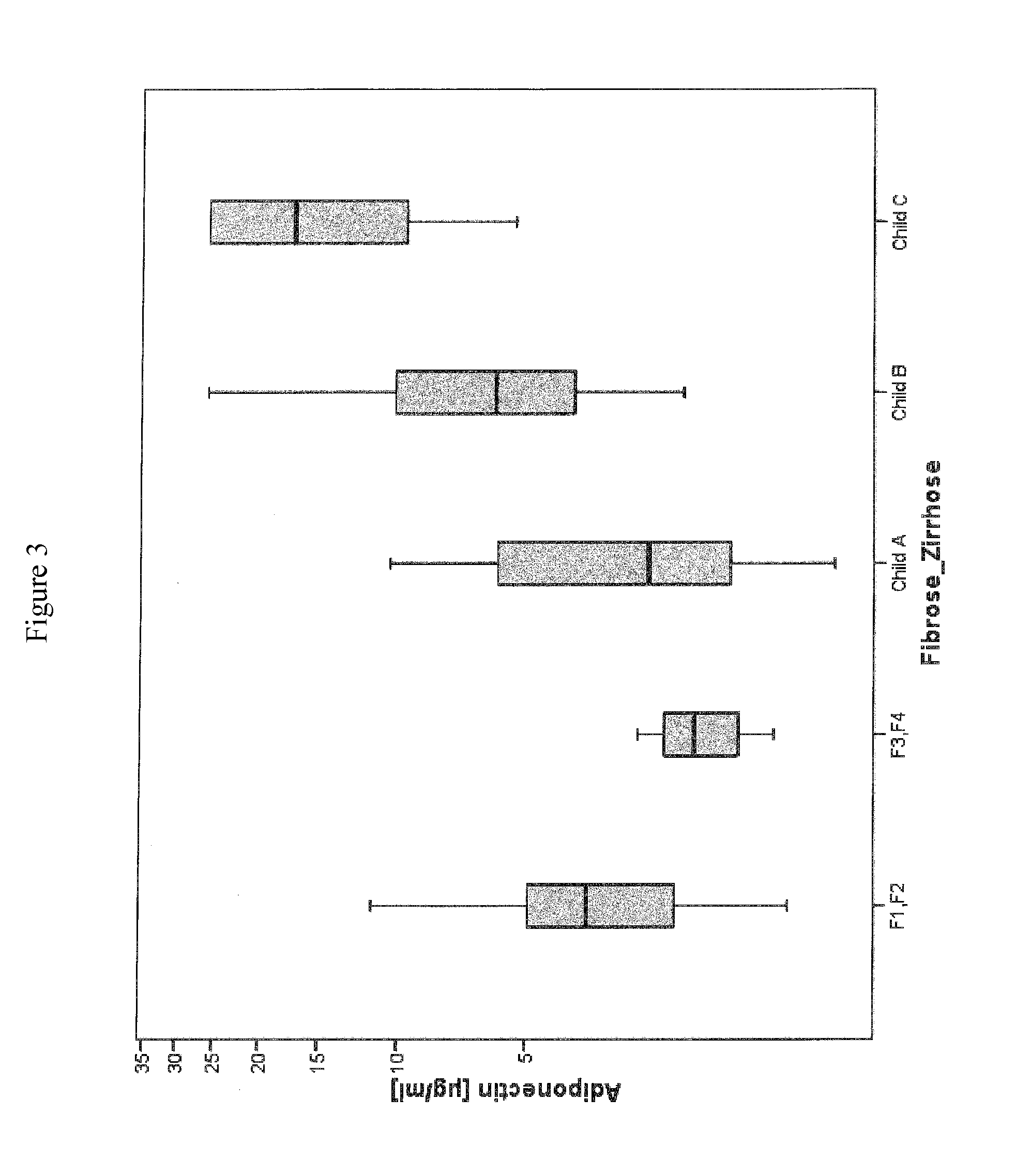Method for assessment of severity of liver cirrhosis
a liver cirrhosis and severity assessment technology, applied in the field of liver cirrhosis severity assessment, can solve the problems of only being able to survive, unable to meet the needs of patients,
- Summary
- Abstract
- Description
- Claims
- Application Information
AI Technical Summary
Problems solved by technology
Method used
Image
Examples
example 1
[0177]The amounts of high molecular weight adiponectin, GDF-15 and PlGF were determined in a total of 64 patients suffering liver fibrosis and liver cirrhosis.
[0178]The patient collective is the same as described by Raedle-Hurst et al. (Europoean Journal of Gastroenterology & Hepatology 2008, Vol 20 No 9).
[0179]Mean age was 48.1+ / −6.5 years (range 31-65). Twenty six patients were female and 38 were male.
[0180]A hepatic biopsy was performed in all patients except those with manifest signs of liver cirrhosis (see Raedle-Hurst et al., loc. cit). Liver biopsy specimens were assessed by an experienced pathologist who was unaware of the clinical and biochemical data of the patients. Fibrosis of the liver was staged according to the Ishak score (Ishak et al., Histological grading and staging of chronic hepatitis. J Hepatol 1995; 22:696-699). Mild fibrosis refers to stage F1-2, moderate fibrosis to F3-4, and severe fibrosis / cirrhosis to F5-6. Severe fibrosis / cirrhosis was classified accordi...
example 2
[0184]A 62 years old patient presents at his primary care physician. PlGF (12.1 pg / ml) and GDF-15 (2780 pg / ml) are determined in a serum sample from said subject. A liver biopsy is carried out and subsequently subjected to histologic examination. Small regenerative nodules are detected indicating liver cirrhosis. Cirrhosis is staged by determining the Child-Pugh-Score (Child A). Moreover, a later determination of HGF in the serum sample mentioned above shows that HGF level is 2560 pg / ml.
example 3
[0185]After an acute episode of liver cirrhosis in a subject with advanced liver disease, a decision has to be made whether said subject requires a liver transplant. Cirrhosis is staged by determining the Child-Pugh-Score (Child C). Moreover, PlGF (18 pg / ml) and GDF-15 (6850 pg / ml), and high molecular weight adiponectin (15.2 μg / ml) are determined in a serum sample from the patient indicating that the subject suffers from end-stage liver disease (severe form of liver cirrhosis). This is further confirmed by a determination of HGF in the serum sample (6280 pg / ml). The patient is enlisted for liver transplantation. Liver transplantation is carried out after six more weeks.
PUM
 Login to View More
Login to View More Abstract
Description
Claims
Application Information
 Login to View More
Login to View More - R&D
- Intellectual Property
- Life Sciences
- Materials
- Tech Scout
- Unparalleled Data Quality
- Higher Quality Content
- 60% Fewer Hallucinations
Browse by: Latest US Patents, China's latest patents, Technical Efficacy Thesaurus, Application Domain, Technology Topic, Popular Technical Reports.
© 2025 PatSnap. All rights reserved.Legal|Privacy policy|Modern Slavery Act Transparency Statement|Sitemap|About US| Contact US: help@patsnap.com



